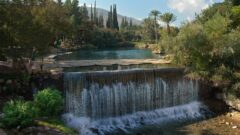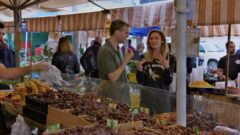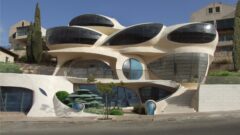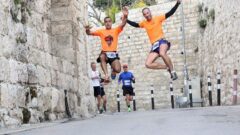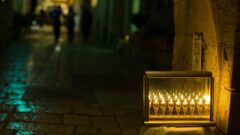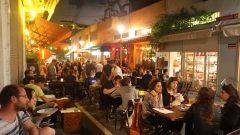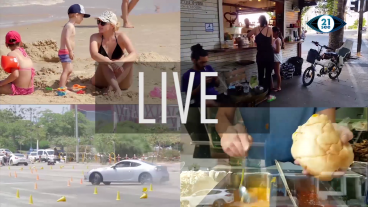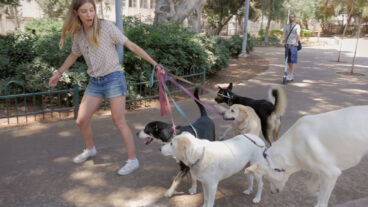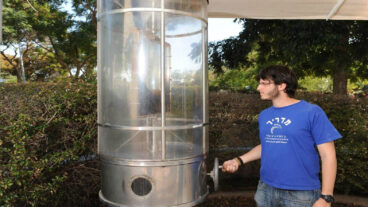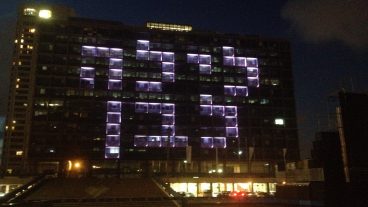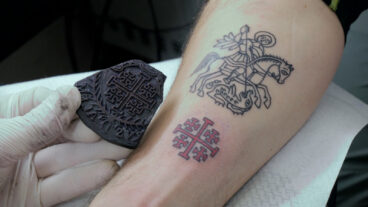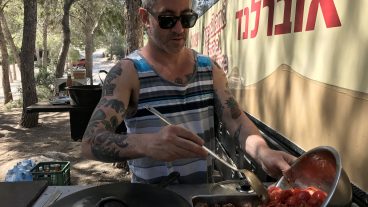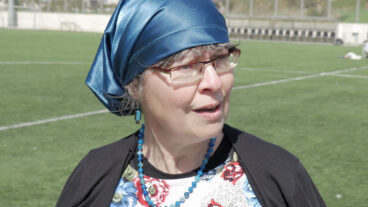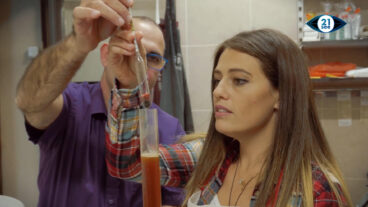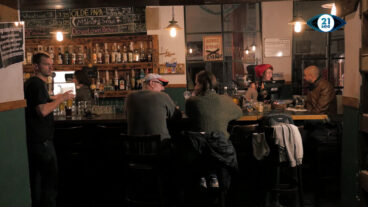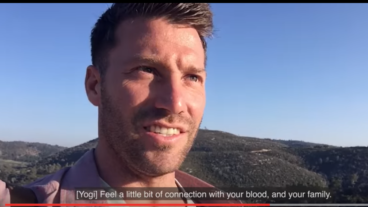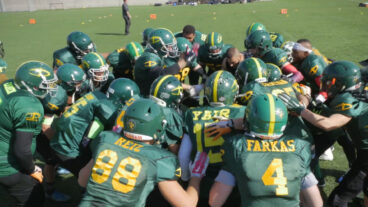#TravelTreasures
14 cool things to do in and near Israeli academic campuses
Art and archeology, nature and science exploration: Fascinating, educational activities on the grounds of Israel’s institutions of higher education.
By Jessica Halfin FEBRUARY 27, 2018, 8:00 AM
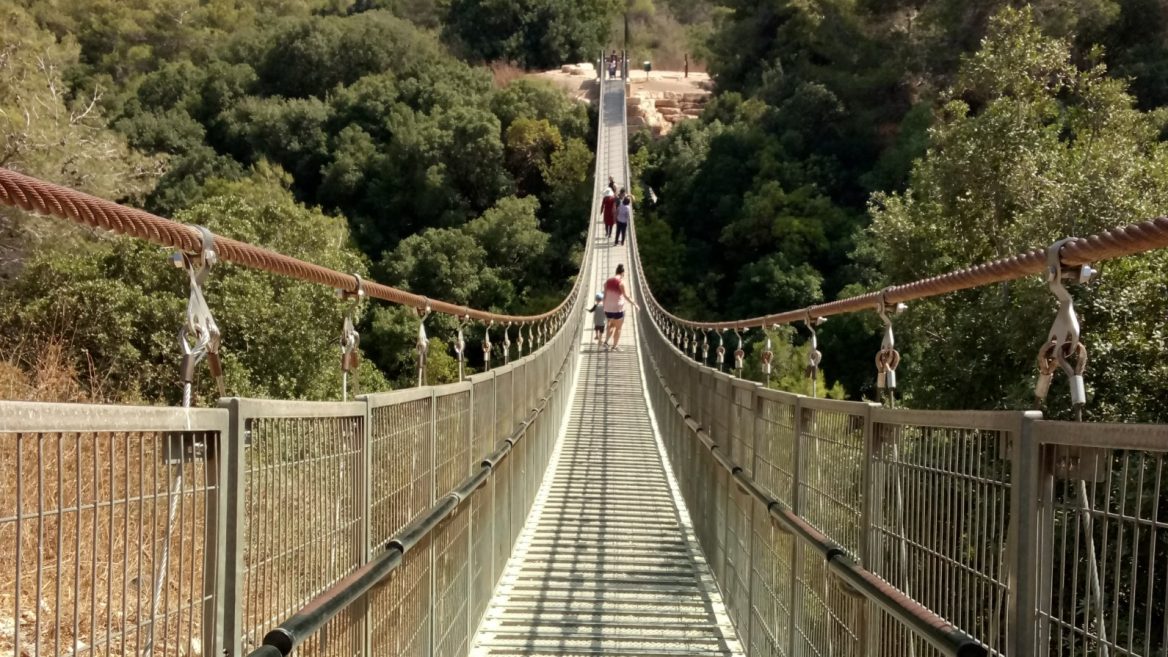
The suspended bridge at Nesher Park, Haifa. Photo by Jessica Halfin
SHARE50TWEETSHARESHARE VIA WHATSAPPCOMMENTEMAIL
With so much fun and culture to be experienced in Israel’s cities, it is easy to overlook the well-crafted museums, archives, monuments and gardens awaiting visitors on the campuses of one of the world’s most educated countries.
UNCOVER ISRAEL - Get the ISRAEL21c
Weekly Edition free by email
You’ll be surprised to find the myriad of awesome things available just around the corner, down the block, or in the surrounding nature of these campuses too.
Here are 14 activity suggestions that will have you looking at Israel through a different set of eyes.
The crowning jewel of North Tel Aviv, this urban campus boasts more than just a diverse course catalogue.
Museum of the Jewish People (Beit Hatfutsot)
Located on the TAU campus, this museum chronicles the 4,000-year history of the Jewish people by exploring the narratives, faith, family life, culture and unique identities of Jewish communities around the world.
Multidisciplinary permanent and temporary art exhibitions, as well as lectures and courses, make up the vibrant museum. The two core exhibits focus on famous Jewish trailblazers throughout history and a display of miniature historical synagogues from all over the globe.
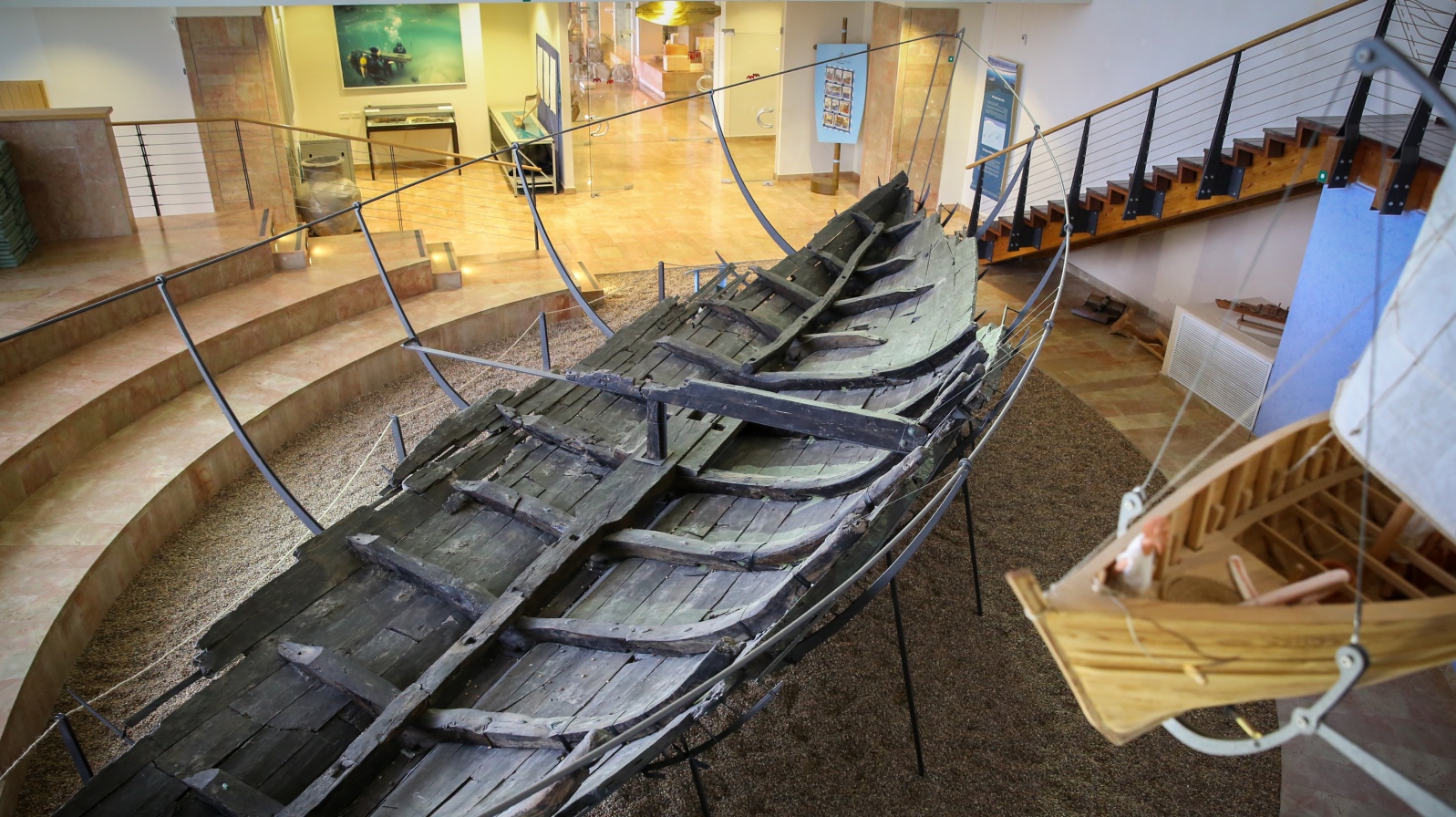
A Phoenician ship from 700 BCE displayed at the Hecht Museum at the University of Haifa. Photo by Yossi Zamir/FLASH90
Temporary exhibits now include “Forever Young – Bob Dylan at 75” and “Operation Moses – 30 Years After,” detailing the experience of Ethiopian Jews relocated to Israel in the 1980s.
Just down the street from the university campus, on Chaim Levanon Street in Ramat Aviv, is another fascinating institution. The Palmach Museum tells the story of Israel’s pre-state elite strike force through immersive multimedia, documentary and video experiences.
Visitors start the journey as a group of new recruits, and continue all the way through landmark events as they get deeper into the museum, up through the end of the 1948 War of Independence. The final room is dedicated to those who lost their lives in fierce battles, a harsh reality that makes the surrounding flourishing cityscape seem that much sweeter.
The Tel Aviv University Botanical Garden includes 27 sections featuring different types of plants, such as cacti and succulents, medicinal herbs, biblical species and more. An afternoon stroll there makes for a relaxing break from the fast-paced city outside the campus.
Also check out the botanical gardens at Hebrew University of Jerusalem, which includes archaeological ruins; and the Botanical Gardens of the Technion in Haifa along the Israel National Trail.
BEN-GURION UNIVERSITY OF THE NEGEV
This university in Beersheva, Israel’s largest desert city, carries the name of Israel’s first prime minister, who had a soft spot for the then mostly undeveloped south. The school is known for its eco-innovation, on-campus activities and exciting dorm life for students from all over the country.
Monument to the Negev Brigade
Trek just east of the university campus, past the Beersheva North train station and high-tech park, and you will reach the Monument to the Negev Brigade — a series of concrete sculptures and symbolic structures commemorating 325 soldiers who fell in the Negev during Israel’s War of Independence.
Set apart from the sprawling city below, the winding structures also capture the sounds of the desert and its whistling winds. This is an especially moving place to visit at sunset and after nightfall, when the lights of the ever-growing city sparkle against the backdrop of the night sky.
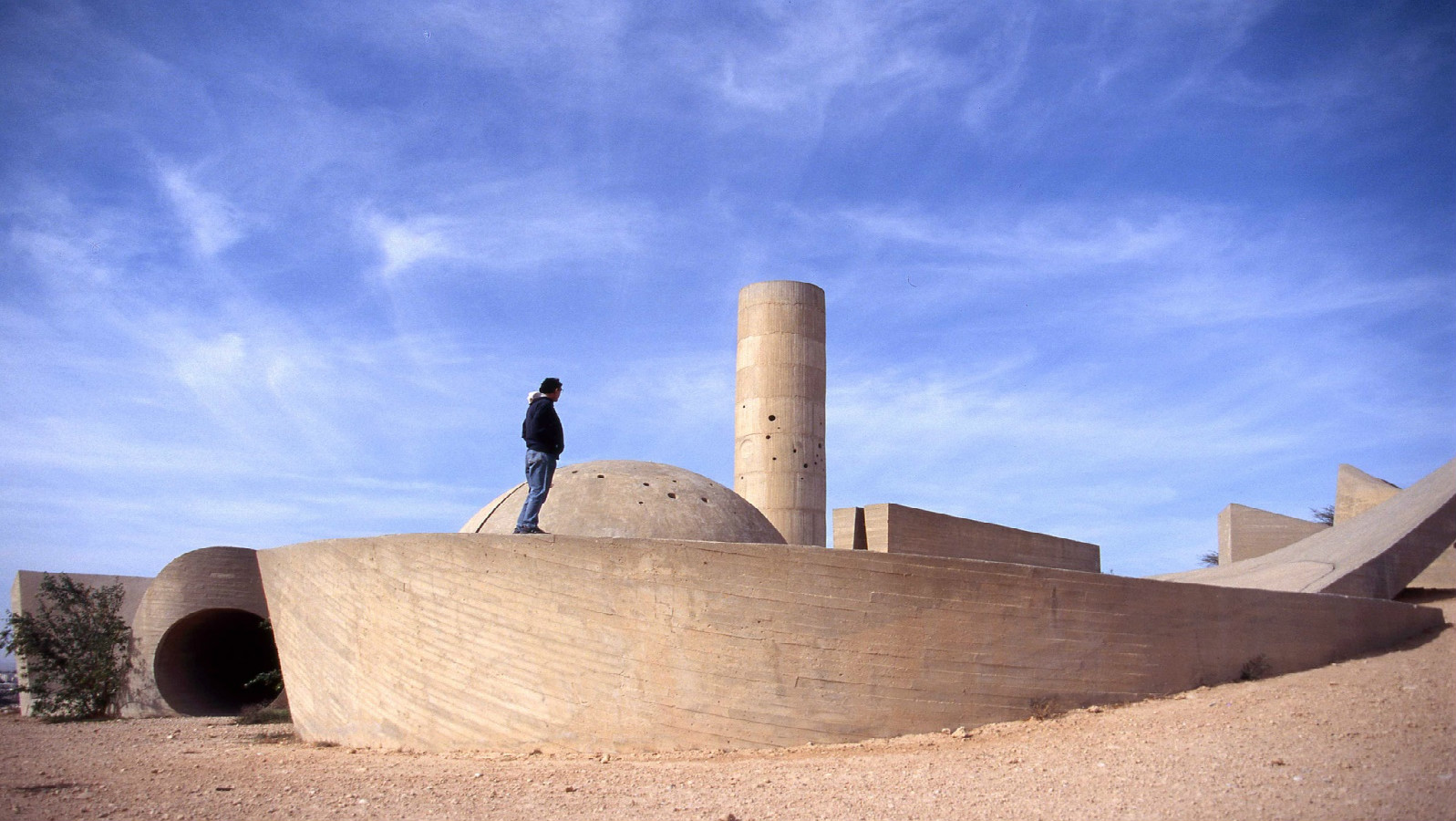
Monument to the Negev Brigade. Photo courtesy of the Ministry of Tourism
A few minutes’ drive from the BGU campus, in Beersheva’s Old City, the Carasso Science Park is made up of both modern and historical Ottoman-era structures. Opened in 2013 on 4.25 acres, the museum’s campus includes 10 interactive exhibits on topics such as genetics, communication and the start of the Internet, microelectronics and nuclear energy, as well as technological and scientific games and activities. The park includes three exhibition galleries, an outdoor sculpture garden and a children’s playground with an interactive fountain.
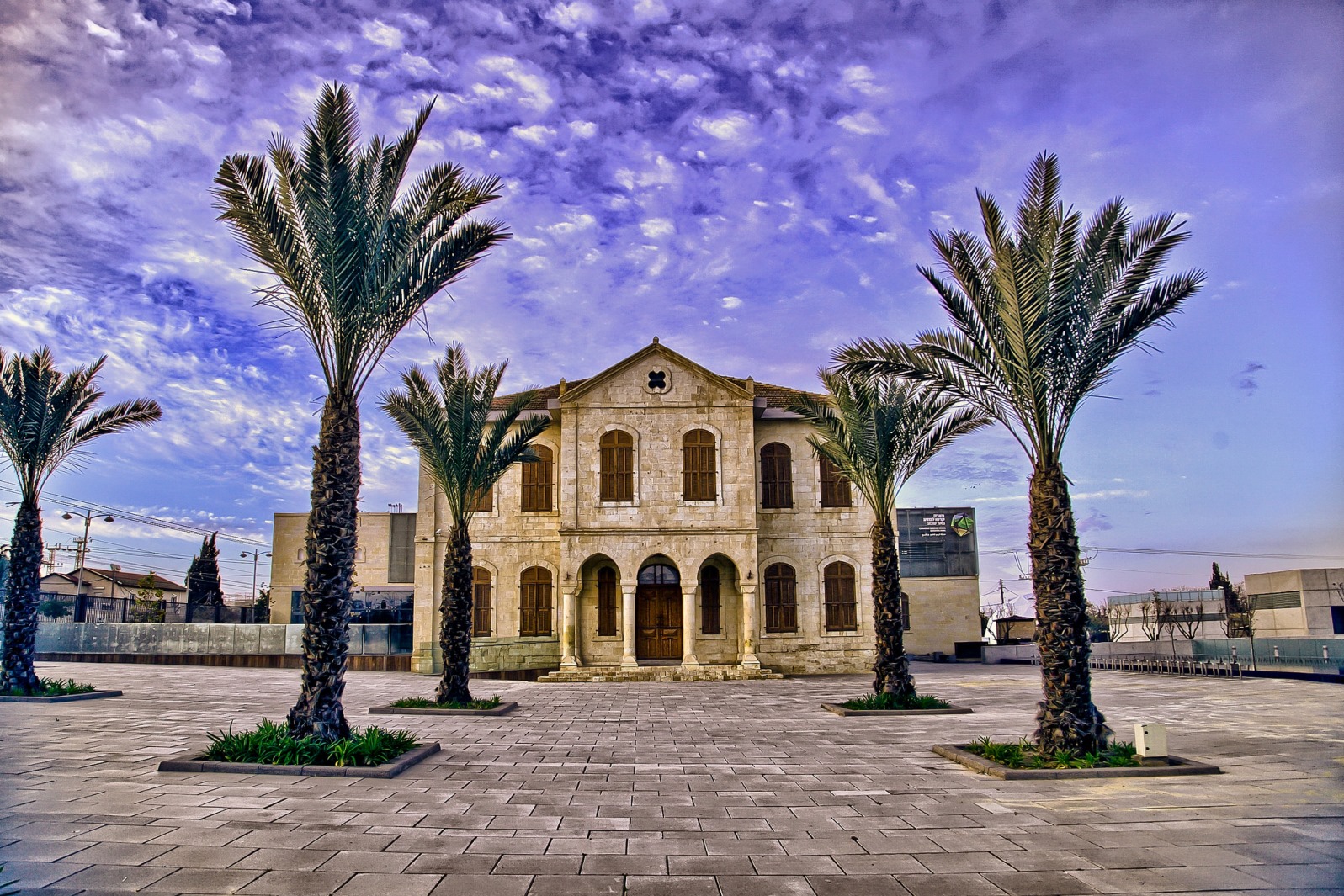
The Carasso Science Park, the largest museum of its kind in Israel, is fronted by a vintage Turkish building. Photo courtesy
Located in Rehovot in central Israel, Weizmann is one of Israel’s – and the world’s — top research institutes. However, it might be the campus itself, and its historical landmarks, that leave you intrigued to spend a day or two there.
The beautifully landscaped, gated university campus is home to 25 historical buildings including the Weizmann House, former home of scientist Chaim Weizmann, Israel’s first president, for whom the institute is named.
The house is an exact preservation complete with all his belongings, including his Lincoln car parked out front, flourishing gardens, and his wife Vera’s bakeware in the kitchen. You’ll find yourself stepping back into a time when the personal life of public figures was kept hidden beneath the surface. The Weizmanns’ graves are located outside the house.
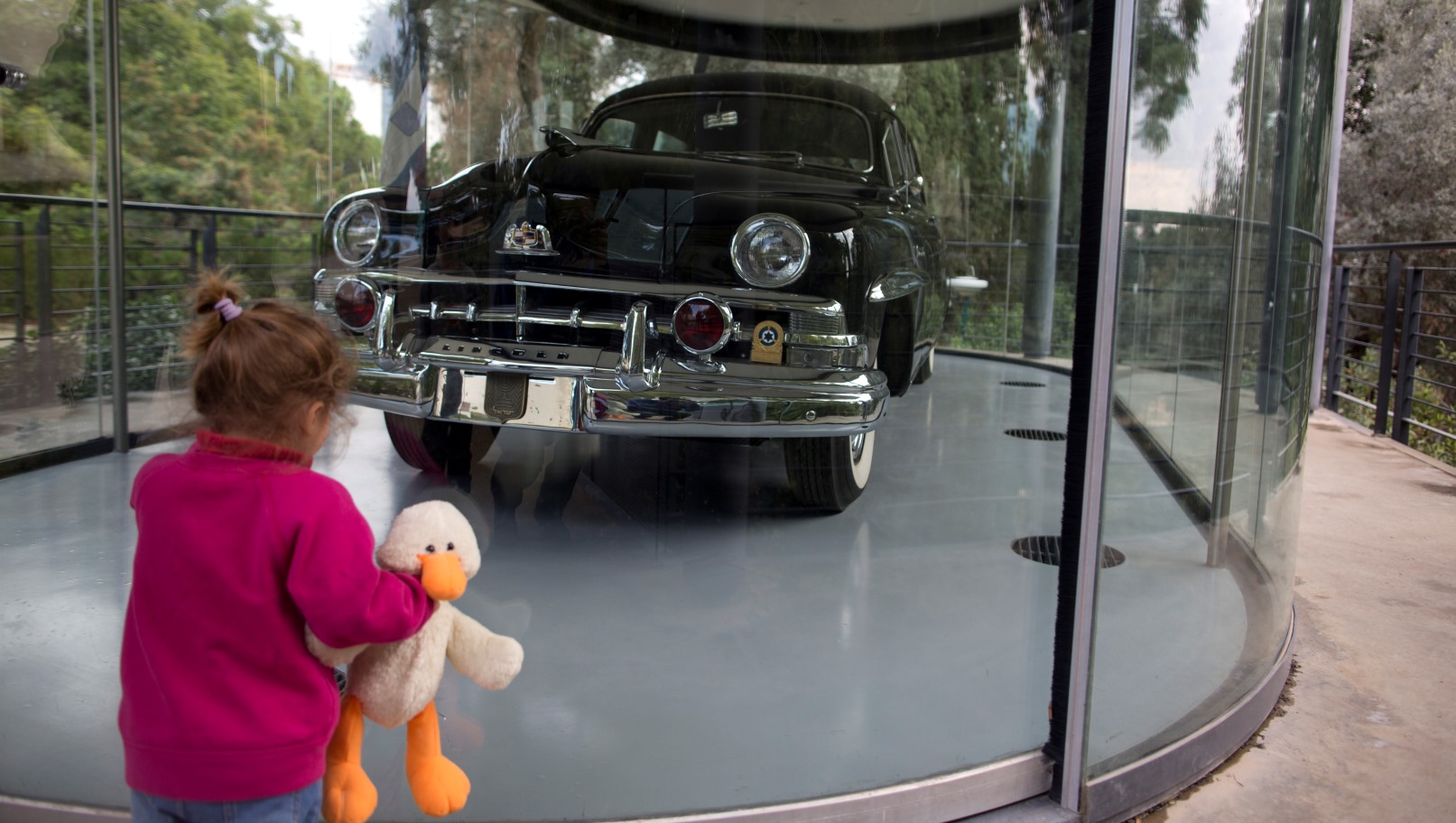
A visitor to the Weizmann House in Rehovot admiring the late Israeli president’s Lincoln car. Photo by Lior Mizrahi/FLASH90
The Clore Garden of Science on the Weizmann campus consists of a series of open-air hands-on science exhibits that get to the core of how things work in the natural world. It is great for kids and fascinating for all ages. Explore on your own, or join a group tour led by instructors. Bring a picnic lunch to enjoy on one of the grassy knolls nearby.
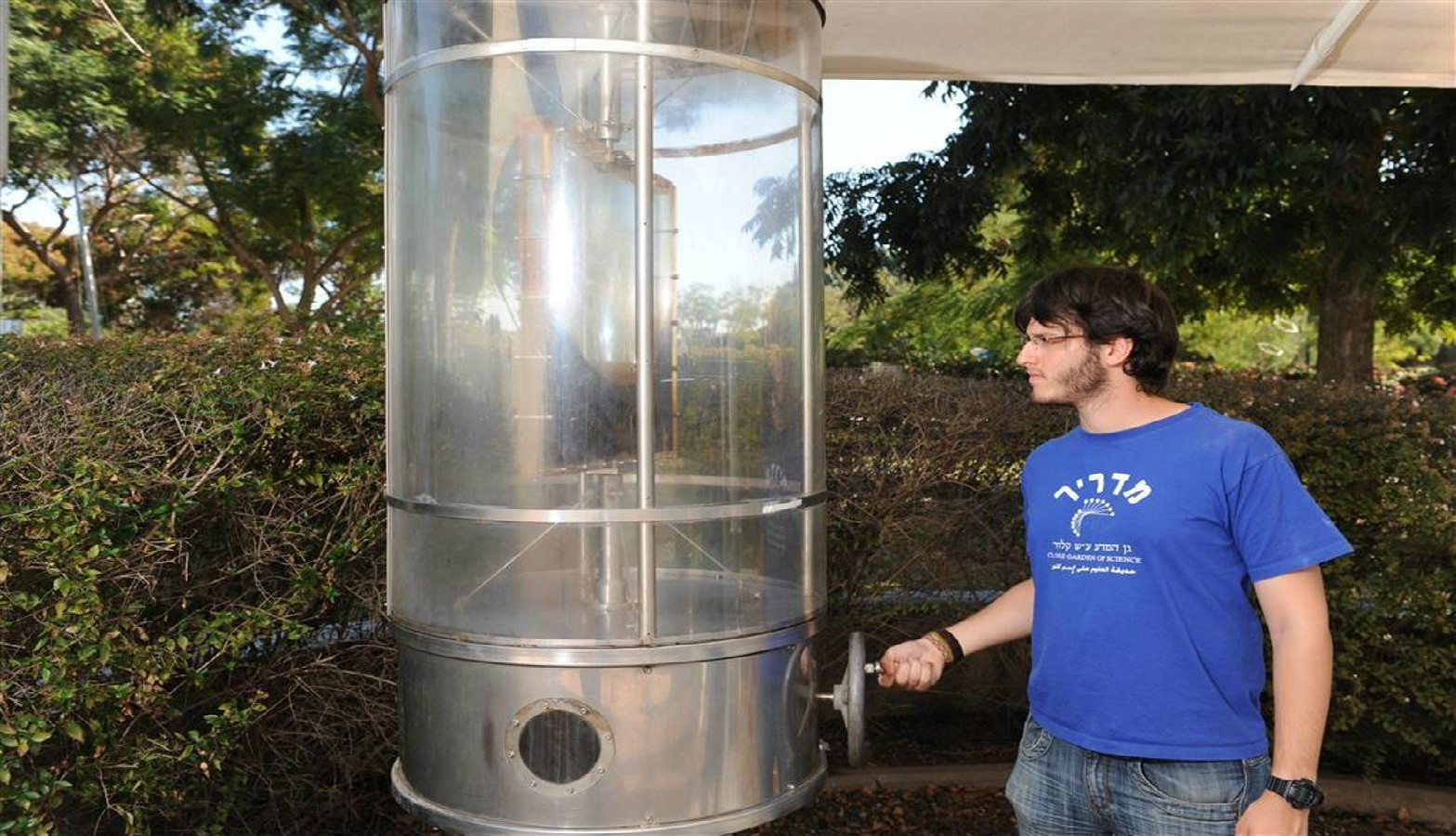
A water centrifuge in the Clore Garden of Science at the Weizmann Institute, Rehovot. Photo by Liora Goldman
Ayalon Institute Bullet Factory
Just off campus, you’ll also want to stop into the Ayalon Institute. This historical landmark takes you underground to a clandestine Palmach bullet factory from the days of the British Mandate, hidden beneath the floor of a kibbutz laundry room. Learn the story of the workers who risked their lives, and walk in the footsteps of the pre-state era pioneers.
HEBREW UNIVERSITY OF JERUSALEM
This university, one of the country’s first such institutions, has campuses on Mount Scopus and on the forested Givat Ram neighborhood near some of the country’s best museums.

Rothberg Amphitheater on the Mount Scopus campus of Hebrew University. Photo by Yoram Aschheim
Set out across either campus on your own to learn about the expansive history and commemorative landmarks of the university, by choosing one of two written guides to lead you. Absorb the magnitude of the places you cross, as you dig one layer deeper into the modern era of Jerusalem.
Just two minutes outside the nature-rich Givat Ram campus is the Biblical Lands Museum, next to the more well-known Israel Museum. This archive of artifacts from across the ancient Near East features such exhibits as “Jerusalem in Babylon: New Light on the Judean Exiles,” which takes you on a journey from the destruction of the First Temple through the daily life of Jews in Babylon.
The main exhibit documents the ancient civilizations of the Middle East and Mediterranean through the ages, including collections of classic Greek and Roman art and artifacts.
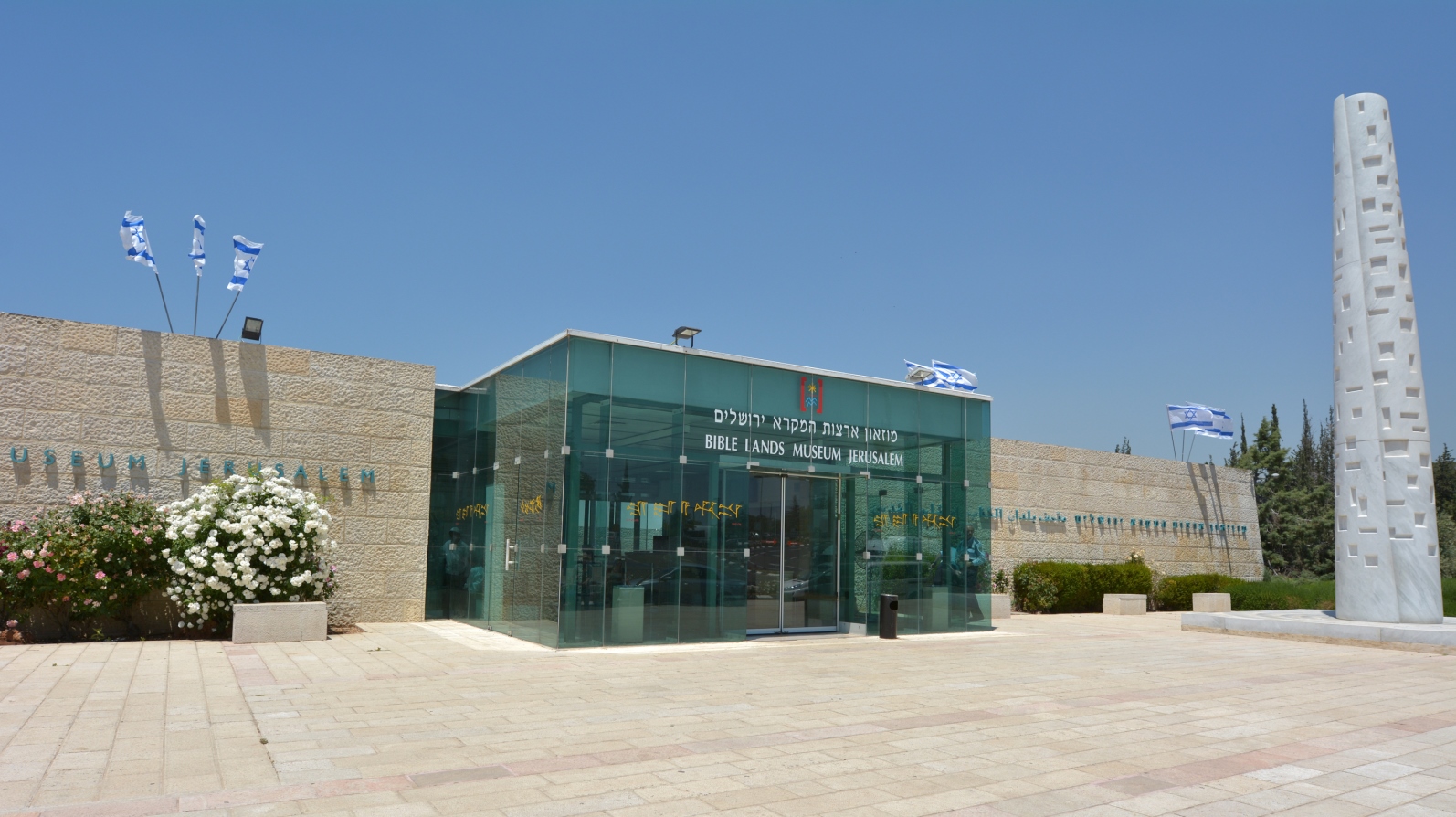
Bible Lands Museum photo by ChameleonsEye/Shutterstock.com
Into that enchanting old-book smell? Adjacent to the Givat Ram campus is Israel’s National Library, which holds original manuscripts of Sir Isaac Newton and a collection of Albert Einstein’s works, among many other collections such as rare books and Hebrew texts, Islamic works dating back to the sixth century, and an assemblage of historical Israeli periodicals, archives and even marriage contracts. Guided tours take place each Thursday at 11am.
Bordering the Carmel Forest near charming Druze villages, Haifa University enjoys a peaceful and green corner of the city. Views down to the sea and out into the vast mountainous expanse to the north make it a coveted place to study arts and sciences, and a great place for tourists to visit.
Eshkol Tower lookout
This 30-story building on top of the Mount Carmel campus since 1978 can be seen from other cities, and is often the first glimpse of Haifa when approaching from the north. It is also the best vantage point in a city filled with lovely bay views. Brave the heights and winds, and make the top of this building your first stop in Haifa U.
Visit the nearby wooded JNF Nesher Park for a short family-friendly hike through the rocky wooded path and over the hanging bridges suspended over the river valley below. Other paths provide longer trails for hiking and biking, and a picnic and barbecue area makes for a pleasant afternoon spot among the tall pines.
Based on the original collection of archaeological artifacts of its founder, scientist and collector Reuben Hecht, the Hecht Museum features pieces displayed chronologically from the Chalcolithic period up through the Byzantine period in ancient Israel.
Particular collections of interest are Jewish coins and seals from the biblical period, “Phoenicians on the Northern Coast of Israel in the Biblical Period,” a display of early arts and crafts, and works of famous European Jewish painters such as Monet and Modigliani.
Read more on: Travel, museums, things to do, israeli universities, Botanical Gardens, Ayalon Institute, Hecht Museum, Bible Lands Museum, Nesher Park, Israel National Library, Clore Garden of science, Carasso Science Park, Beit Hatfutsot, Palmach museum
4 reasons Israel is the best travel destination for vegans
Luxury hotel in Acre honored by TripAdvisor
8 of the most anticipated hotels opening in Israel in 2018
A unique travel experience brings young couples to Israel
10 unexpected, totally awesome, Israeli food destinations
10 spectacular photos of waterfalls in Israel
New Netflix travel show spotlights the tastes of Israel
7 Israeli buildings that will make you stop and stare
22 things to do in Israel when it’s cold and wet
14 epic race competitions to watch for in 2018
7 places to celebrate Christmas midnight Mass in the Holy Land
10 dazzling photos of Hanukkah in the Holy Land
Take a tour of Israel’s huge new solar-energy valley in the desert
15 color-drenched photos of fall foliage in Israel
9 little-known Israeli food markets to check out ASAP
10 reasons to get excited about Israel’s newest airport
By Adam Niklas
The 7 hottest nightspots in Jaffa
Aussie, NZ leaders come for centennial of Beersheva battle
10 hidden gems you’ll want to visit in Haifa
COMMENTS
Jessica Halfin is an American immigrant who arrived in Israel in 2006. She is an Israeli-trained baker, gourmet cook, food and culture writer, and gives foodie tours to tourists in Haifa City.
VIEW ALL STORIES BY JESSICA HALFIN
Feb 27, 11:01 am
Israeli breakthrough in noninvasive prostate cancer test
Feb 27, 8:41 am
Israeli physicist leads int’l team making quantum computer
Feb 27, 8:00 am
14 cool things to do in and near Israeli academic campuses
Feb 26, 9:23 am
Moovit, Mobileye to transform transportation together
Feb 26, 8:00 am
The Purim Queen of Tel Aviv, 1928
Feb 26, 7:00 am
Textile company creates jobs for unemployed Bedouin women
Are you 18-25 years oldand living in North America?Get a paid internshipat ISRAEL21cAPPLY
UNCOVER ISRAEL
Get The Weekly Newsletter
Free by Email
MOST
1
14 Israelis making a mark on London’s tech scene
2
8 of the most anticipated hotels opening in Israel in 2018
3
Israelis build first dairy farm in Papua New Guinea
4
One drug could treat Alzheimer’s, MS, Crohn’s and more
5
4 reasons Israel is the best travel destination for vegans
LATEST COMMENTS
Roxanne Halper: Very interesting and well
written article. Thank you Posted on Ethiopia adopts Israeli health-ed plan to fight snail fever
Michael Katz: Insanity must run in your
family. Posted on Can Israel help solve Cape Town’s water crisis?
Michael Katz: South Africa deserves to go the way of Zimbabwe. It… Posted on Can Israel help solve Cape Town’s water crisis?
Robert Mollel: wow! its great and amazing natural cenary......thanks in… Posted on 10 spectacular photos of waterfalls in Israel
Robert Mollel: wow! its great and amazing natural cenary......thanks in… Posted on 10 spectacular photos of waterfalls in Israel
It’s all about the people at 21see
21see takes a comical look at Hanukkah – the original Christmas
Israeli TV formats are proving a hit all over the world
One small step for man, a giant step for the hevre
What does it mean to compete? Maccabiah athletes reveal all
Where will you eat your apples and honey this year?
Michael Solomonov co-hosts international chef contest in Israel
12 top gourmet food kiosks in Tel Aviv
Renny explores Tel Aviv’s love affair with dogs
Win a free trip to Israel with ISRAEL21c and El AL Airlines
Women’s Football League tackles Israel
Behind the seams of Israel’s fashion capital with 21see
ISRAEL21c plays at Israel’s unique outdoor science park
Join ISRAEL21c live at White Night in Tel Aviv
Kraft launches first full-size American football field in Israel
Running for fun on the Tel Aviv Night Run
What happens when the NFL meets the IFL?
ISRAEL21c heads to Tel Aviv’s annual Gay Pride Parade
Join ISRAEL21c at Taste the City Tel Aviv
Religious tattoos are an art in Jerusalem
Michael Solomonov cooks up a storm in the Jerusalem Hills
ISRAEL21c goes live at the Farmer’s Market in Tel Aviv Port
An Israeli mom’s view of American football in Israel
Kathy Cohen conquers the Israel Football League
Fans and pros go wild for American football in Israel
Yogi teaches Kathy to quarterback in one crash lesson
21see puts in a hard day’s work at the brewery
Beer-D: Where Israel’s home and craft brewers stock up
How the 9/11 tragedy led to the Dancing Camel brewery
‘We all speak ball!’ Watch our 21see trailer on American football
‘We all speak ball!’ Watch our 21see trailer on American football
Craft beer in the startup nation with 21see
ISRAEL21c goes Hollywood with new 21see film series





